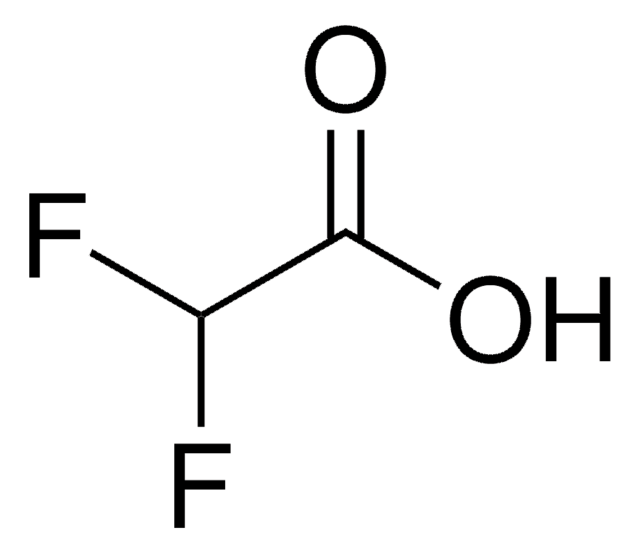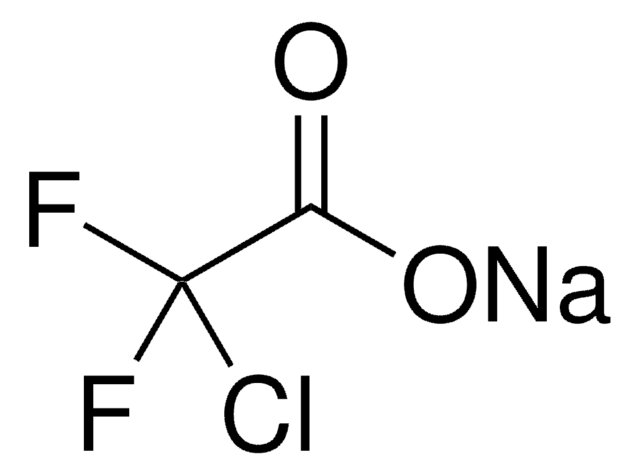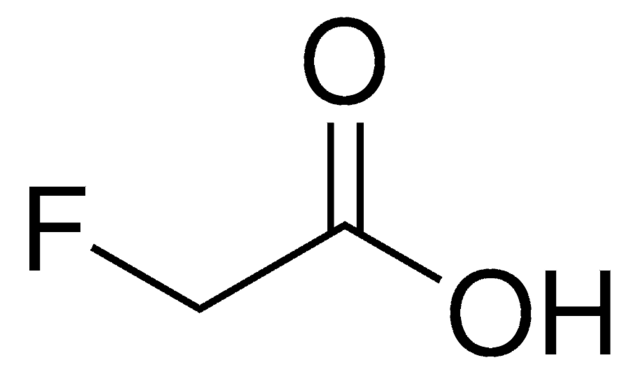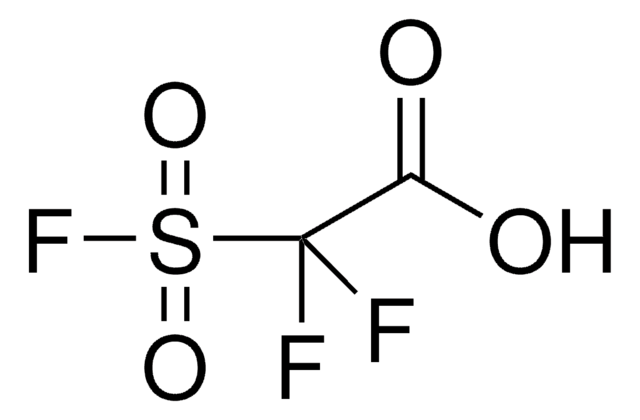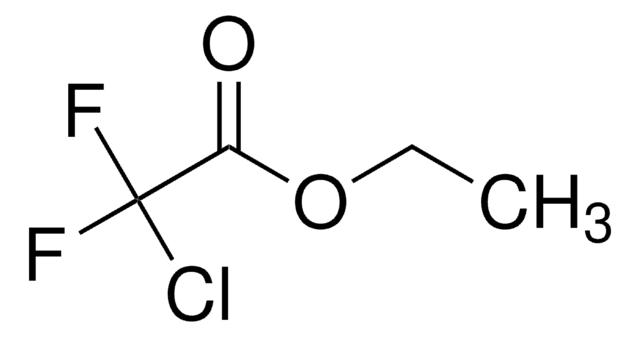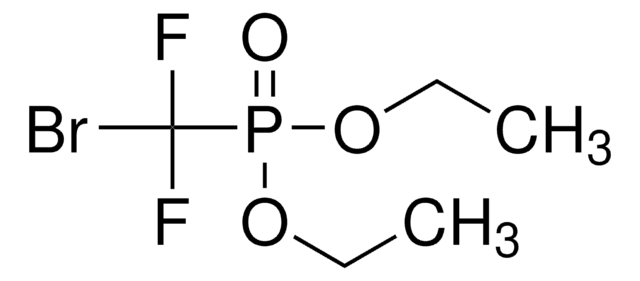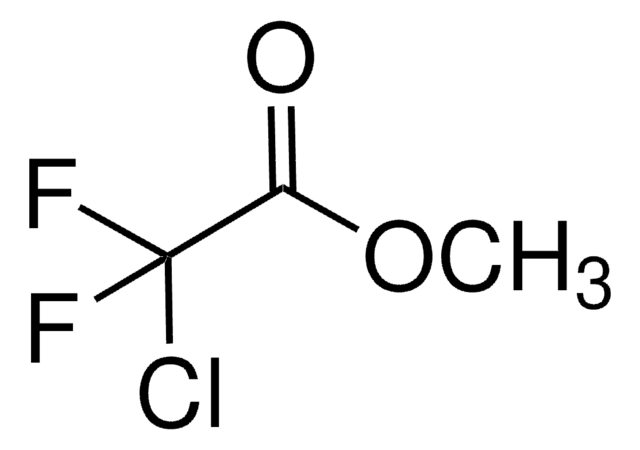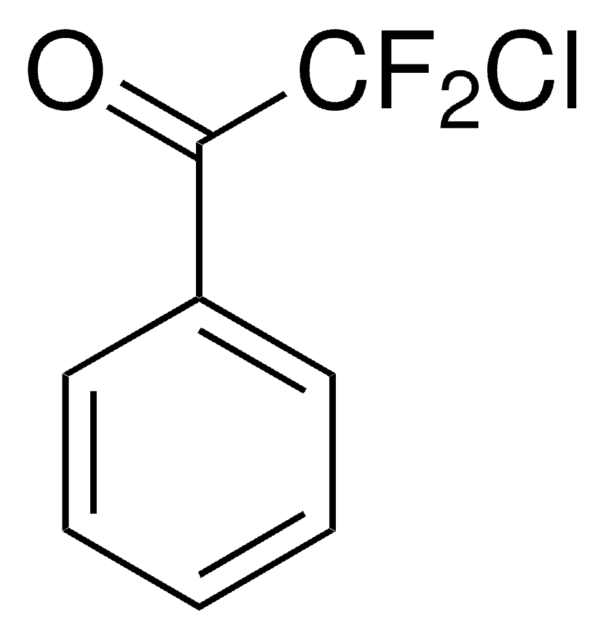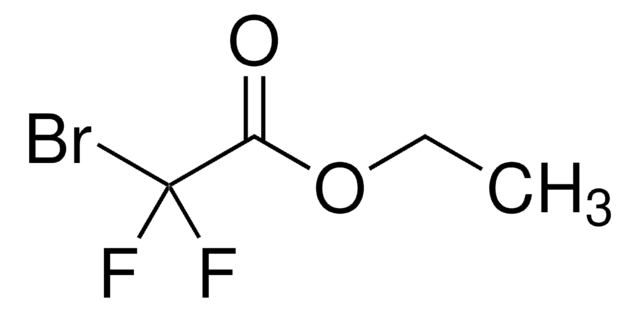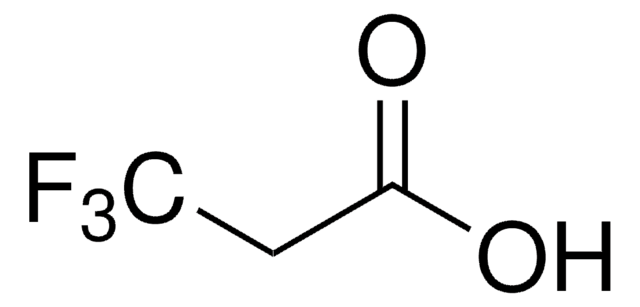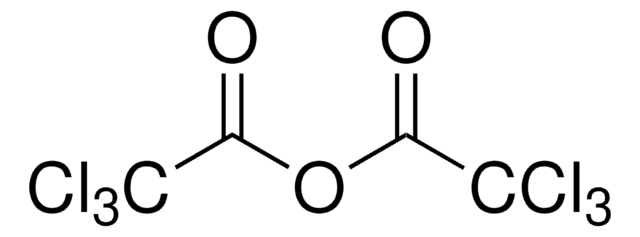C34200
Chlorodifluoroacetic acid
98%
Autenticatiper visualizzare i prezzi riservati alla tua organizzazione & contrattuali
About This Item
Formula condensata:
F2ClCCOOH
Numero CAS:
Peso molecolare:
130.48
Beilstein:
956625
Numero CE:
Numero MDL:
Codice UNSPSC:
12352106
ID PubChem:
NACRES:
NA.22
Prodotti consigliati
Saggio
98%
Stato
liquid
Indice di rifrazione
n20/D 1.355 (lit.)
P. ebollizione
122 °C (lit.)
Punto di fusione
20-23 °C (lit.)
Densità
1.54 g/mL at 25 °C (lit.)
Stringa SMILE
OC(=O)C(F)(F)Cl
InChI
1S/C2HClF2O2/c3-2(4,5)1(6)7/h(H,6,7)
OAWAZQITIZDJRB-UHFFFAOYSA-N
Cerchi prodotti simili? Visita Guida al confronto tra prodotti
Avvertenze
Danger
Indicazioni di pericolo
Classi di pericolo
Skin Corr. 1A
Codice della classe di stoccaggio
8A - Combustible corrosive hazardous materials
Classe di pericolosità dell'acqua (WGK)
WGK 3
Punto d’infiammabilità (°F)
Not applicable
Punto d’infiammabilità (°C)
Not applicable
Dispositivi di protezione individuale
Faceshields, Gloves, Goggles, type ABEK (EN14387) respirator filter
Scegli una delle versioni più recenti:
Possiedi già questo prodotto?
I documenti relativi ai prodotti acquistati recentemente sono disponibili nell’Archivio dei documenti.
I clienti hanno visto anche
J W Harris et al.
Chemical research in toxicology, 4(2), 180-186 (1991-03-01)
1,2-Dichloro-1,1-difluoroethane (HCFC-132b) is a potential substitute for some ozone-depleting chlorofluorocarbons and a model for other 1,1,1,2-tetrahaloethanes under consideration as chlorofluorocarbon substitutes. Male Fischer 344 rats were given 10 mmol/kg HCFC-132b dissolved in corn oil by intraperitoneal injection. An NMR assay
Keith R Solomon et al.
Photochemical & photobiological sciences : Official journal of the European Photochemistry Association and the European Society for Photobiology, 2(1), 62-67 (2003-03-28)
Increased UV-B through stratospheric ozone depletion leads to an increased chemical activity in the lower atmosphere (the troposphere). The effect of stratospheric ozone depletion on tropospheric ozone is small (though significant) compared to the ozone generated anthropogenically in areas already
M L Hanson et al.
Environmental toxicology and chemistry, 20(12), 2758-2767 (2002-01-05)
Chlorodifluoroacetic acid (CDFA) is a novel haloacetic acid (HAA) and has been recently documented in aquatic systems. It is a suspected degradation product of the refrigerants 1,1,2-trichloro-1,1-difluoroethane (CFC-113) and 1-chloro-1,1-difluoroethane (HCFC-142b). Haloacetic acids can be phytotoxic, putatively acting through inhibition
M Zdanowska-Fraczek et al.
Solid state nuclear magnetic resonance, 6(2), 141-146 (1996-04-01)
The reorientation of CClF2 groups in N(CH3)4H(ClF2CCOO)2 has been studied using pulsed NQR and NMR techniques. The temperature dependence of both chlorine (35Cl) NQR and fluorine (19F) NMR spin-lattice relaxation has been measured T1Q of chlorine is attributed to the
Janina Kopyra et al.
The Journal of chemical physics, 135(12), 124307-124307 (2011-10-07)
Negative ion formation following resonant electron attachment to the three title molecules is studied by means of a beam experiment with mass spectrometric detection of the anions. All three molecules exhibit a pronounced resonance in the energy range around 1
Il team dei nostri ricercatori vanta grande esperienza in tutte le aree della ricerca quali Life Science, scienza dei materiali, sintesi chimica, cromatografia, discipline analitiche, ecc..
Contatta l'Assistenza Tecnica.